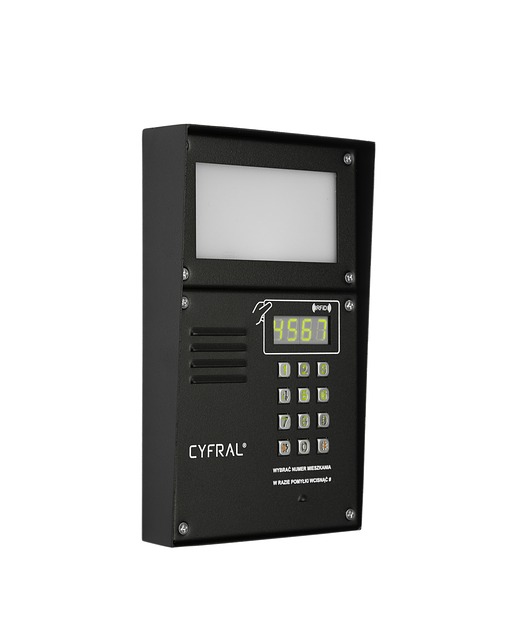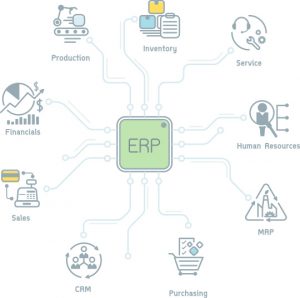What is RFID – Radio frequency identification

Radio-frequency identification (RFID) uses electromagnetic fields to automatically identify and track tags attached to objects. It’s part of the growing field of IoT. The tags contain electronically stored information. Passive tags collect energy from a nearby RFID reader’s interrogating radio waves. Active tags have a local power source (such as a battery) and may operate hundreds of meters from the RFID reader. Unlike a barcode, the tag need not be within the line of sight of the reader, so it may be embedded in the tracked object. RFID is one method for Automatic Identification and Data Capture .
RFID tags are used in many industries, for example, an RFID tag attached to an automobile during production can be used to track its progress through the assembly line; RFID-tagged pharmaceuticals can be tracked through warehouses; and implanting RFID microchips in livestock and pets allows for positive identification of animals.
Since RFID tags can be attached to cash, clothing, and possessions, or implanted in animals and people, the possibility of reading personally-linked information without consent has raised serious privacy concerns.[2] These concerns resulted in standard specifications development addressing privacy and security issues. ISO/IEC 18000 and ISO/IEC 29167 use on-chip cryptography methods for intractability, tag and reader authentication, and over-the-air privacy. ISO/IEC 20248 specifies a digital signature data structure for RFID and barcodes providing data, source and read method authenticity. This work is done within ISO/IEC JTC 1/SC 31 Automatic identification and data capture techniques. Tags can also be used in shops to expedite checkout, and to prevent theft by customers and employees.
In 2014, the world RFID market was worth US$8.89 billion, up from US$7.77 billion in 2013 and US$6.96 billion in 2012. This figure includes tags, readers, and software/services for RFID cards, labels, fobs, and all other form factors. The market value is expected to rise to US$18.68 billion by 2026
Design
Tags – A radio-frequency identification system uses tags, or labels attached to the objects to be identified. Two-way radio transmitter-receivers called interrogators or readers send a signal to the tag and read its response.
RFID tags can be either passive, active or battery-assisted passive. An active tag has an on-board battery and periodically transmits its ID signal. A battery-assisted passive (BAP) has a small battery on board and is activated when in the presence of an RFID reader. A passive tag is cheaper and smaller because it has no battery; instead, the tag uses the radio energy transmitted by the reader. However, to operate a passive tag, it must be illuminated with a power level roughly a thousand times stronger than for signal transmission. That makes a difference in interference and in exposure to radiation.
Tags may either be read-only, having a factory-assigned serial number that is used as a key into a database, or may be read/write, where object-specific data can be written into the tag by the system user. Field programmable tags may be write-once, read-multiple; “blank” tags may be written with an electronic product code by the user.
RFID tags contain at least three parts: an integrated circuit for storing and processing information that modulates and demodulates a radio-frequency (RF) signals; a means of collecting DC power from the incident reader signal; and an antenna for receiving and transmitting the signal. The tag information is stored in a non-volatile memory. The RFID tag includes either fixed or programmable logic for processing the transmission and sensor data, respectively.
An RFID reader transmits an encoded radio signal to interrogate the tag. The RFID tag receives the message and then responds with its identification and other information. This may be only a unique tag serial number, or may be product-related information such as a stock number, lot or batch number, production date, or other specific information. Since tags have individual serial numbers, the RFID system design can discriminate among several tags that might be within the range of the RFID reader and read them simultaneously.
Readers – RFID systems can be classified by the type of tag and reader. A Passive Reader Active Tag (PRAT) system has a passive reader which only receives radio signals from active tags (battery operated, transmit only). The reception range of a PRAT system reader can be adjusted from 1–2,000 feet (0–600 m, allowing flexibility in applications such as asset protection and supervision.
An Active Reader Passive Tag (ARPT) system has an active reader, which transmits interrogator signals and also receives authentication replies from passive tags.
An Active Reader Active Tag (ARAT) system uses active tags awoken with an interrogator signal from the active reader. A variation of this system could also use a Battery-Assisted Passive (BAP) tag which acts like a passive tag but has a small battery to power the tag’s return reporting signal.
Fixed readers are set up to create a specific interrogation zone which can be tightly controlled. This allows a highly defined reading area for when tags go in and out of the interrogation zone. Mobile readers may be hand-held or mounted on carts or vehicles.
Uses
RFID can be used in a variety of applications, such as:
Electronic key for RFID based lock system
- Access management
- Tracking of goods
- Tracking of persons and animals
- Toll collection and contactless payment
- Machine readable travel documents
- Smartdust(for massively distributed sensor networks)
- Airport baggage tracking logistics[21]
- Timing sporting events
- Tracking and billing processes
Commerce – RFID provides a way for organizations to identify and manage stock, tools and equipment (asset tracking), etc. without manual data entry. Manufactured products such as automobiles or garments can be tracked through the factory and through shipping to the customer. Automatic identification with RFID can be used for inventory systems. Many organizations require that their vendors place RFID tags on all shipments to improve supply chain management.
Retail – RFID is used for item level tagging in retail stores. In addition to inventory control, this provides both protection against theft by customers (shoplifting) and employees (“shrinkage”) by using electronic article surveillance (EAS), and a self checkout process for customers. Tags of different type can be physically removed with a special tool or deactivated electronically once items have been paid for. On leaving the shop customers have to pass near an RFID detector; if they have items with active RFID tags, an alarm sounds, both indicating an unpaid-for item, and identifying what it is.
Casinos can use RFID to authenticate poker chips, and can selectively invalidate any chips known to be stolen.
Access control – RFID antenna for vehicular access control.RFID tags are widely used in identification badges, replacing earlier magnetic stripe cards. These badges need only be held within a certain distance of the reader to authenticate the holder. Tags can also be placed on vehicles, which can be read at a distance, to allow entrance to controlled areas without having to stop the vehicle and present a card or enter an access code.
Promotion tracking – To prevent retailers diverting products, manufacturers are exploring the use of RFID tags on promoted merchandise so that they can track exactly which product has sold through the supply chain at fully discounted prices
Transportation and logistic – Yard management, shipping and freight and distribution centers use RFID tracking. In the railroad industry, RFID tags mounted on locomotives and rolling stock identify the owner, identification number and type of equipment and its characteristics. This can be used with a database to identify the lading, origin, destination, etc. of the commodities being carried.
In commercial aviation, RFID is used to support maintenance on commercial aircraft. RFID tags are used to identify baggage and cargo at several airports and airlines.[29][30]
Some countries are using RFID for vehicle registration and enforcement.[31] RFID can help detect and retrieve stolen cars
Intelligent transportation systems – RFID E-ZPass reader attached to the pole and antenna (right) used in traffic monitoring in New York City
RFID is used in intelligent transportation systems. In New York City, RFID readers are deployed at intersections to track E-ZPasstags as a means for monitoring the traffic flow. The data are fed through the broadband wireless infrastructure to the traffic management center to be used in adaptive traffic control of the traffic lights
Complement to barcode RFID tags are often a complement, but not a substitute, for UPC or EAN barcodes. They may never completely replace barcodes, due in part to their higher cost and the advantage of multiple data sources on the same object. Also, unlike RFID labels, barcodes can be generated and distributed electronically, e.g. via e-mail or mobile phone, for printing or display by the recipient. An example is airline boarding passes. The new EPC, along with several other schemes, is widely available at reasonable cost.
The storage of data associated with tracking items will require many terabytes. Filtering and categorizing RFID data is needed to create useful information. It is likely that goods will be tracked by the pallet using RFID tags, and at package level with Universal Product Code (UPC) or EAN from unique barcodes.
The unique identity is a mandatory requirement for RFID tags, despite special choice of the numbering scheme. RFID tag data capacity is large enough that each individual tag will have a unique code, while current bar codes are limited to a single type code for a particular product. The uniqueness of RFID tags means that a product may be tracked as it moves from location to location, finally ending up in the consumer’s hands. This may help to combat theft and other forms of product loss. The tracing of products is an important feature that gets well supported with RFID tags containing a unique identity of the tag and also the serial number of the object. This may help companies cope with quality deficiencies and resulting recall campaigns, but also contributes to concern about tracking and profiling of consumers after the sale.


























